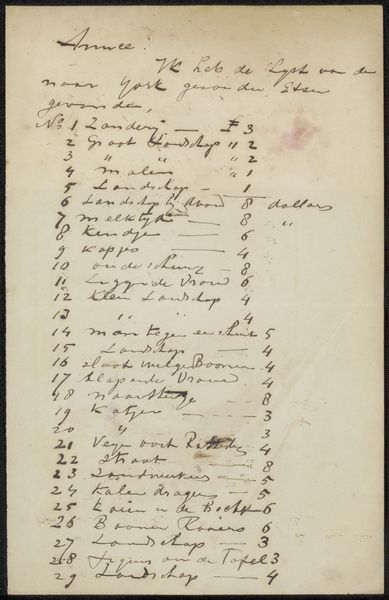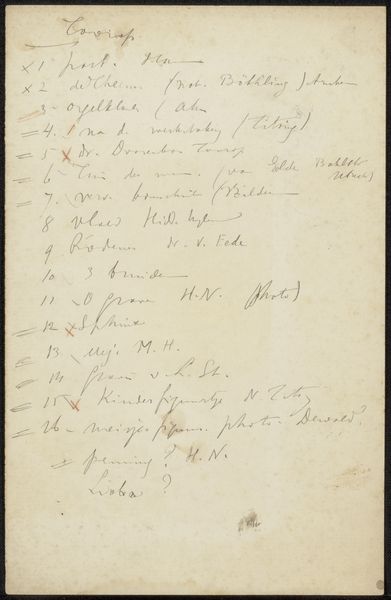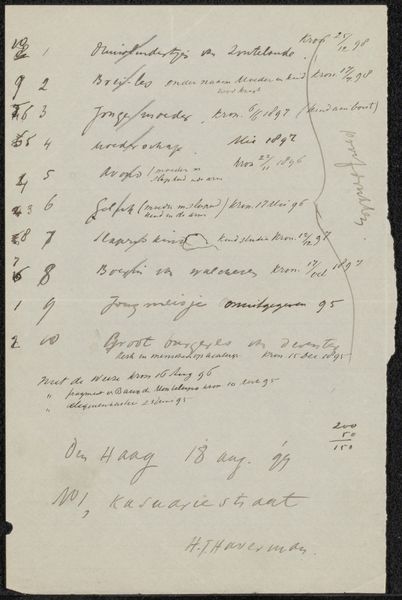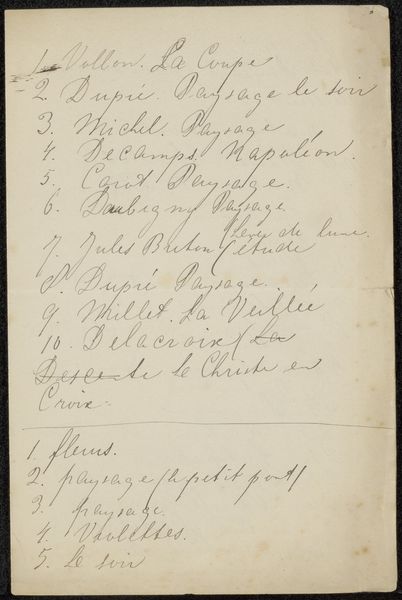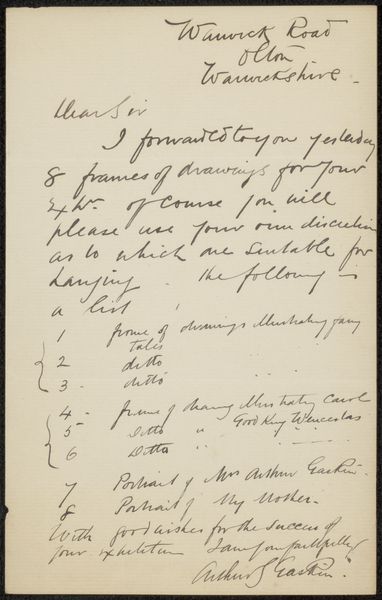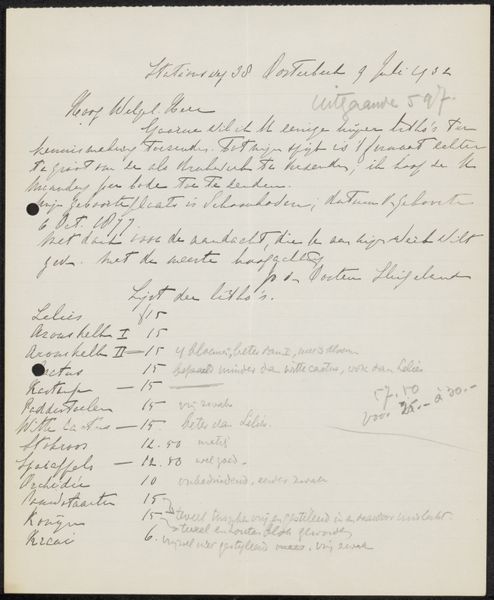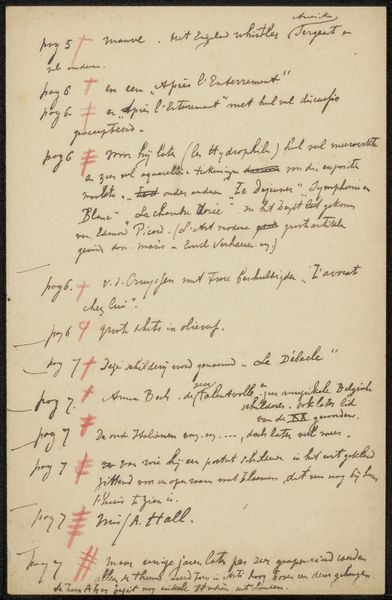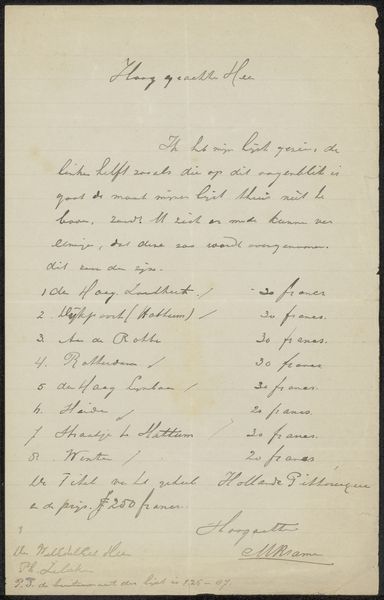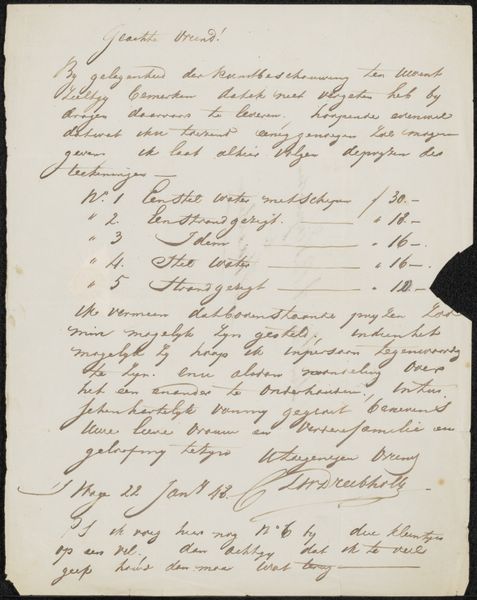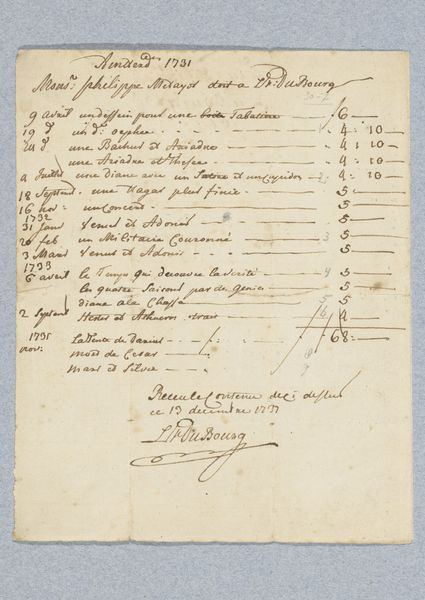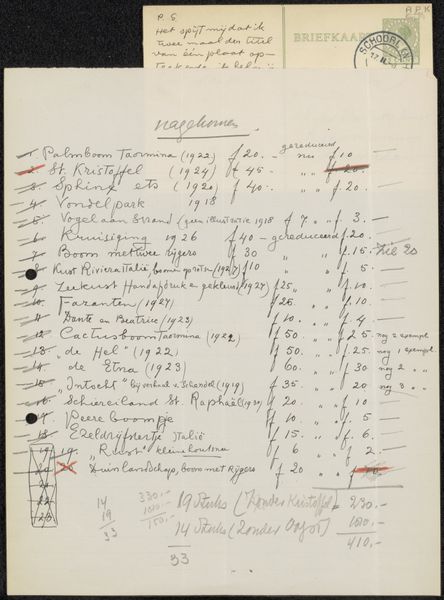
drawing, paper, ink, pen
#
portrait
#
drawing
#
art-nouveau
#
paper
#
ink
#
pen work
#
symbolism
#
pen
Copyright: Rijks Museum: Open Domain
Editor: This piece, "Brief aan Philip Zilcken," possibly from 1905 by Jan Toorop, consists of ink on paper. It has a rather raw, work-in-progress kind of feel. What's your take on it? Curator: The rawness you observe points directly to the core of this artwork. It's a document, a material trace of exchange between Toorop and Zilcken, likely related to commerce. This shifts the art historical focus from high-minded aesthetics to the tangible realities of the art market. Note the inventory-like quality. The listings – “artiste her l’atelier”, “L’arbre mort” - are these titles of artworks, or even something else? Editor: I see… it reads like an invoice, almost! So, these titles represent specific works that Toorop is selling or showing? Curator: Precisely. But consider the labor embedded here. The physical act of writing, the calculation of prices, the very paper and ink, these are all materials and processes revealing the material conditions of artistic creation. This elevates what might seem like a mundane artifact into an insightful record. It prompts questions about how Toorop navigated the market forces of his time. Is the commodification or transaction undermining these listed works or is the gesture highlighting the artistry? Editor: So, by examining the materials and the implied economic exchange, we move beyond just admiring the artistry to understanding the socio-economic factors influencing the work's existence. Curator: Exactly. We see how art-making is entwined with labor, materiality, and consumption, blurring the traditional lines between high art and the realities of production. Editor: That's really opened my eyes. I hadn’t considered how the piece of paper itself and the handwriting are so critical to understanding the context. Curator: Looking at the material process provides a crucial framework for understanding art's broader implications.
